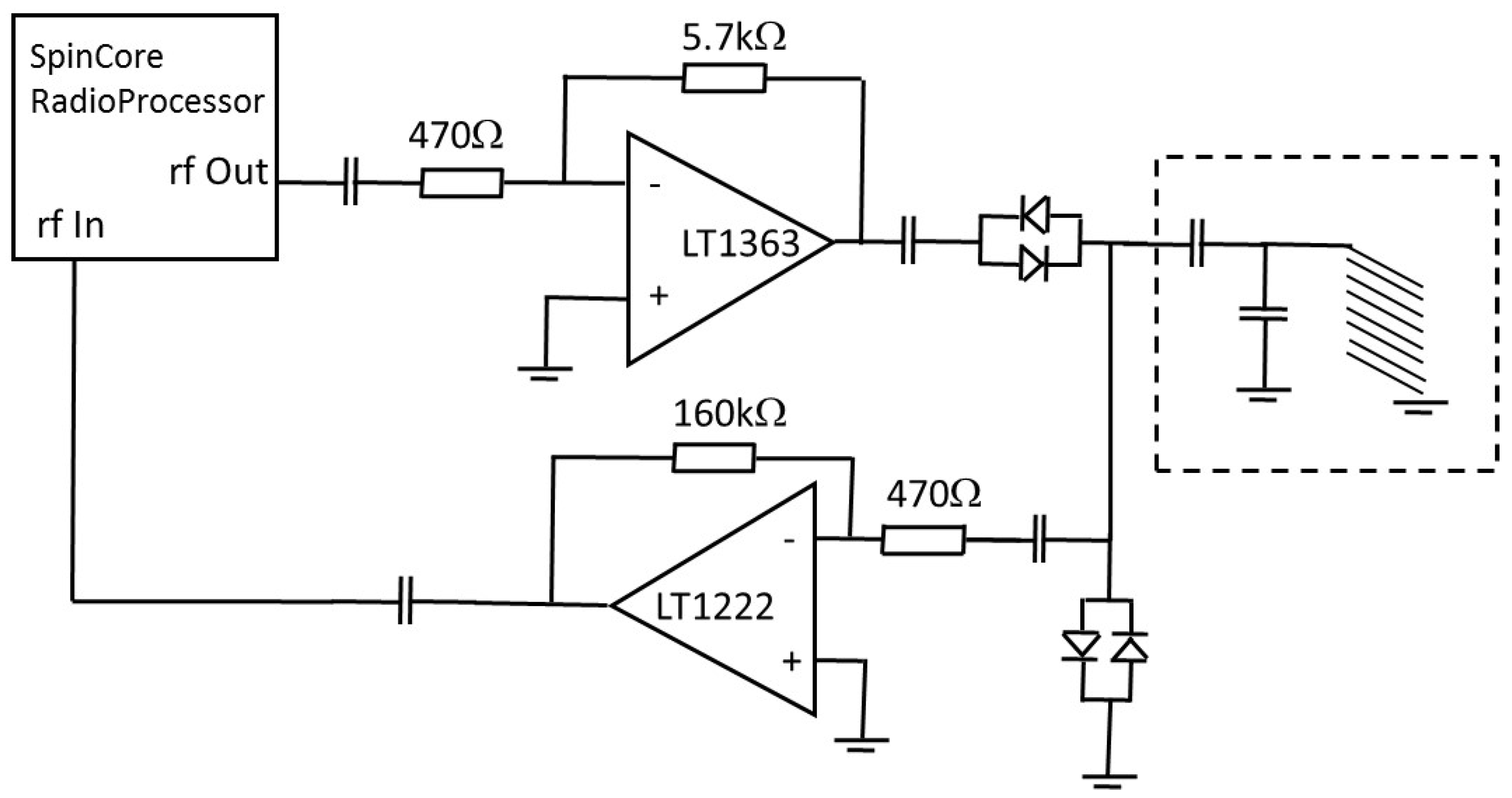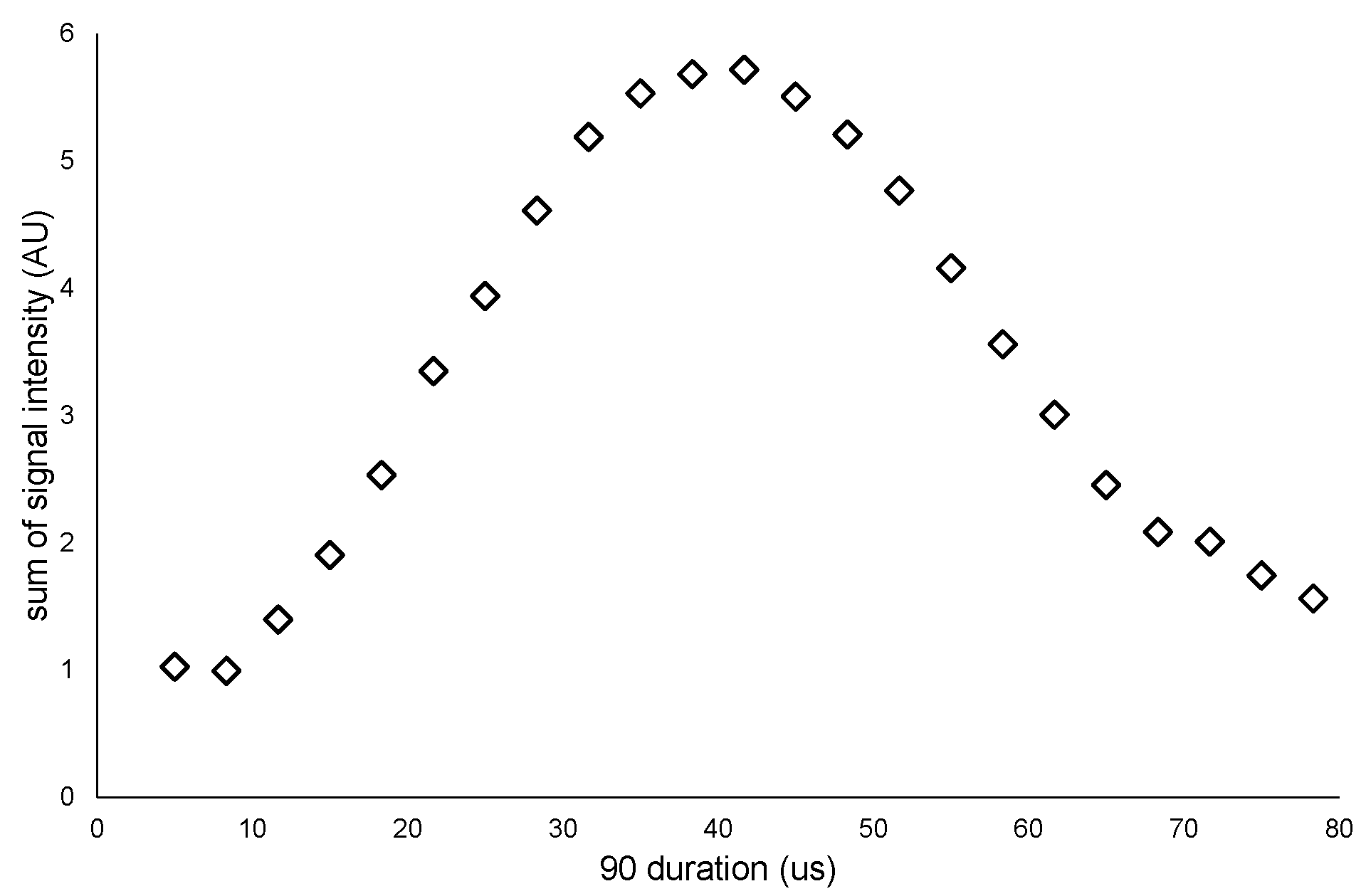Operational Amplifiers Revisited for Low Field Magnetic Resonance Relaxation Time Measurement Electronics †
Abstract
:1. Introduction
2. Materials and Methods
3. Results
4. Discussion
Author Contributions
Funding
Conflicts of Interest
References
- Weber, U.; Thiele, H. NMR Spectroscopy: Modern Spectral Analysis, 1st ed.; Wiley VCH: Weinheim, Germany, 1998. [Google Scholar]
- Dale, B.M.; Brown, M.A.; Semelka, R.C. MRI: Basic Principles and Applications; Wiley-Blackwell: Hoboken, NJ, USA, 2015. [Google Scholar]
- Blumich, B.; Perlo, J.; Casanova, F. Mobile single-sided NMR. Prog. Nucl. Magn. Reson. Spectrosc. 2008, 52, 197–269. [Google Scholar] [CrossRef]
- Blümich, B. Introduction to compact NMR: A review of methods. Trends Anal. Chem. 2016, 83, 2–11. [Google Scholar] [CrossRef]
- Kirtil, E.; Cikrikci, S.; McCarthy, M.J.; Oztop, M.H. Recent advances in time domain NMR & MRI sensors and their food applications. Curr. Opin. Food Sci. 2017, 17, 9–15. [Google Scholar] [CrossRef]
- Fukushima, E.; Roeder, S.B.W. Experimental Pulse NMR: A Nuts and Bolts Approach, 1st ed.; Westview Press: Boulder, CO, USA, 1981. [Google Scholar]
- Dabaghyana, M.; Muradyan, I.; Hrovat, A.; Butler, J.; Fredrick, E.; Zhou, F.; Kyriaziz, A.; Hardin, C.; Patz, S.; Hrovat, M. A portable single-sided magnet system for remote NMR measurements of pulmonary function. NMR Biomed. 2014, 27, 1479–1489. [Google Scholar] [CrossRef] [PubMed]
- SpinCore RadioProcessor Board. Available online: http://www.spincore.com/products/RadioProcessor/ (accessed on 27 February 2019).
- LT1363 Data Sheet. Available online: https://www.analog.com/media/en/technical-documentation/data-sheets/1363fa.pdf (accessed on 28 February 2019).
- LT1222 Data Sheet. Available online: https://www.analog.com/media/en/technical-documentation/data-sheets/1222fc.pdf (accessed on 28 February 2019).
- Meiboom, S.; Gill, D. Modified Spin-Echo Method for Measuring Nuclear Relaxation Times. Rev. Sci. Instrum. 1958, 29, 688. [Google Scholar] [CrossRef]




Publisher’s Note: MDPI stays neutral with regard to jurisdictional claims in published maps and institutional affiliations. |
© 2019 by the authors. Licensee MDPI, Basel, Switzerland. This article is an open access article distributed under the terms and conditions of the Creative Commons Attribution (CC BY) license (https://creativecommons.org/licenses/by/4.0/).
Share and Cite
Almazrouei, N.K.; Newton, M.I.; Morris, R.H. Operational Amplifiers Revisited for Low Field Magnetic Resonance Relaxation Time Measurement Electronics. Proceedings 2020, 42, 1. https://doi.org/10.3390/ecsa-6-06645
Almazrouei NK, Newton MI, Morris RH. Operational Amplifiers Revisited for Low Field Magnetic Resonance Relaxation Time Measurement Electronics. Proceedings. 2020; 42(1):1. https://doi.org/10.3390/ecsa-6-06645
Chicago/Turabian StyleAlmazrouei, Najlaa K., Michael I. Newton, and Robert H. Morris. 2020. "Operational Amplifiers Revisited for Low Field Magnetic Resonance Relaxation Time Measurement Electronics" Proceedings 42, no. 1: 1. https://doi.org/10.3390/ecsa-6-06645
APA StyleAlmazrouei, N. K., Newton, M. I., & Morris, R. H. (2020). Operational Amplifiers Revisited for Low Field Magnetic Resonance Relaxation Time Measurement Electronics. Proceedings, 42(1), 1. https://doi.org/10.3390/ecsa-6-06645




